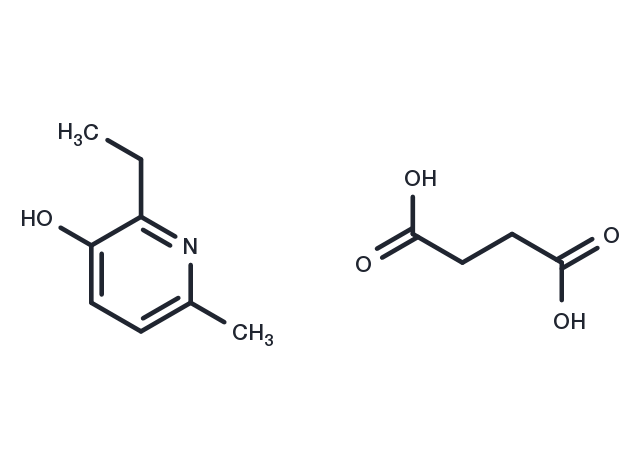Powder: -20°C for 3 years | In solvent: -80°C for 1 year


Emoxypine Succinate is an antioxidant.

| Pack Size | Availability | Price/USD | Quantity |
|---|---|---|---|
| 1 g | In stock | $ 39.00 | |
| 1 mL * 10 mM (in DMSO) | In stock | $ 35.00 |




| Description | Emoxypine Succinate is an antioxidant. |
| In vivo | Intracoronary administration of emoxypine caused the dose-dependent increase in the average coronary blood flow without changing the parameters of cardiohemodynamics.?Emoxypine failed to change the structure of the phase coronary blood flow.?When administered at the concentration of 5.10(-4)M emoxypine increased the volume rate of the perfusate outflow from the rat isolated heart cavities and decreased the value of potassium contracture of isolated segments of the coronary vessels.?The data obtained indicate the direct coronarolytic action of emoxypine[1]. |
| Molecular Weight | 255.27 |
| Formula | C8H11NO.C4H6O4 |
| CAS No. | 127464-43-1 |
Powder: -20°C for 3 years | In solvent: -80°C for 1 year
DMSO: 30 mg/mL (117.52 mM)
You can also refer to dose conversion for different animals. More
bottom
Please see Inhibitor Handling Instructions for more frequently ask questions. Topics include: how to prepare stock solutions, how to store products, and cautions on cell-based assays & animal experiments, etc.
Emoxypine Succinate 127464-43-1 Others inhibitor inhibit
